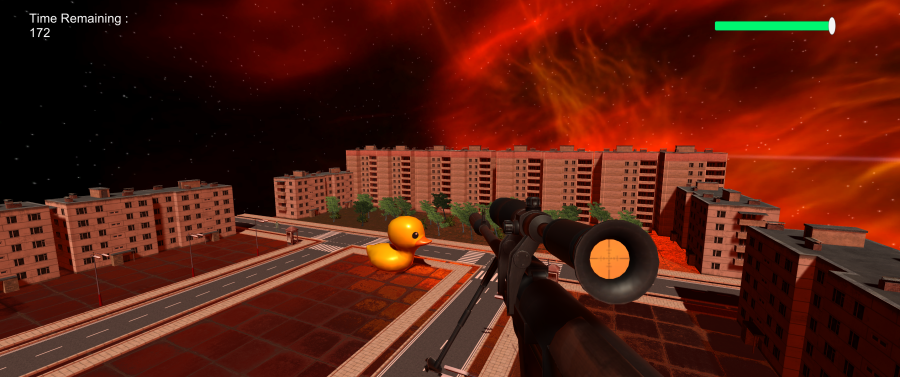
Participant demographics
For the 2nd game of this unit, I run the same playtesting template I did for the prototype 1. The sessions lasted for around 10 minutes each. All 3 participants were confidants and naïve playtesters. All 3 testers had previous experience with games, playtesting, and programming. Like for the first prototype, all of them are PC gamers and have moderate experience with first person shooters.
Playtesting findings
I tried with the playtesting to get a general idea about what was good and wrong with the game. I found it hard to express this with numbers, probably because I can’t do it so I preferred to ask them for opinions rather than numerical judgements.
I divided my questions around the 3 areas we were trying to gather information on: Gameplay responsiveness / General gameplay // Balance and difficulty // Aesthetic aspect of the game.
- Gameplay
Every playtesters all had previous experience with first person shooters like Call of Duty, Battlefield, or Lost Planet. I asked them: Do you think that for a FPS, the gameplay was enjoyable and is the lack of movement a turn off for the game.
Overall, they found the gameplay responsive and were not too shocked about the lack of movement. They said that in the initial idea of sniper defence, it is an interesting option. However, one of them did say that moving just on the roof could be also interesting. This was one of our initial idea but I didn’t apply it in my prototype and I still think that at least for this level, being static is better.
I got some reflections about the mouse movement being too slow when non-scoped and too fast when scoped. I tried to reduce that in my prototype beforehand but as it was causing error, I decided to leave it as it was for the playtesting. However, I do agree that this needs to be changed.
They finished about the gameplay being not too hard but maybe a bit too monotonous with only 1 kind of enemies. I completely agree and I could totally add several types of enemies and maybe other weapons and maps to change the gameplay even more.
- Balance and difficulty
For the difficulty and balance theme, I asked them: Do you think the game is beatable, do you think your weaponry is sufficient ?
The evolution of the difficulty is accelerated because it is a prototype. It goes from easy to hard to simulate an advancement in the levels. In their opinion the game is beatable. However, they did criticize a bit the firing rate.
They said that the fire rate was sufficient at the beginning (the 90 first seconds) but could be augmented when reaching a certain time. The spawn rate of the enemies was going higher and higher but the rifle was still capped at 1 shot / sec. They suggested that upon reaching a certain time, the rifle could be upgraded or changed to get a more powerful version of it.
I got some words about the bullets not hitting the targets. After some investigation, it seems that the hitbox generated by the navmesh are bigger than the actual elements. So, the city lighting was blocking bullets even though the player isn’t aiming at the pole. This could be patched be manually redoing the hitbox of the elements present on the field.
3. Game Aesthetic
Originally the game should’ve been something in a more greyish tone, more urban. After some thought about it since the rubber ducky was something so strange to put in a game, I decided to stray away from the greyish theme to go into something more mystical. I did create an atmosphere with a nebulous skybox and a crystal-like music. I asked them about their opinion about the general ambiance of the game and the art style.
Overall the game was appreciated. The graphism matched the” rubber ducky madness” pretty well (That’s their words) and the music contributed to the atmosphere giving an ethereal feeling to the scene. They said that maybe a blue skybox would be better suited. It is interesting because I got the same recommendation for the playtesting of game 1. People seem to want blue colours in game.
As I said in the previous playtesting. Even if I like taking recommendations about aesthetic in a game. I think it’s before everything a bias taken by the creator and thus should not really be criticized.
- Improvement and recommendations:
-Add a pause function
-Modify the speed of the mouse when zoomed in
-Change the fire rate of the gun
-Redo the hitbox of static elements
– Add a limitless mode where you need to compete for the highest time survived
-Add impacts on the ground to know where you shoot when not aiming
-Add the possibility to kill 2 enemies with 1 bullet
-Add animation for the enemies (Free assets rarely have animations)
-Add more enemies, map and guns